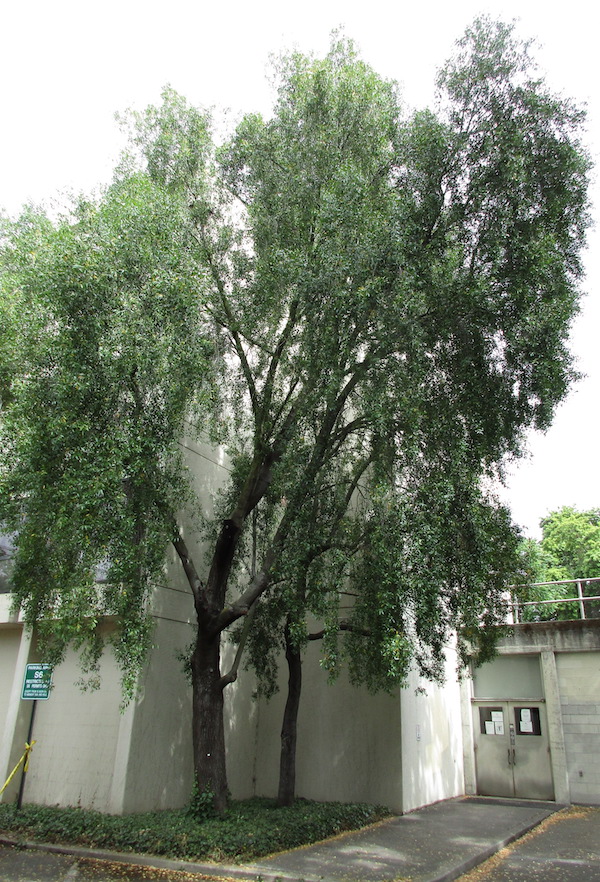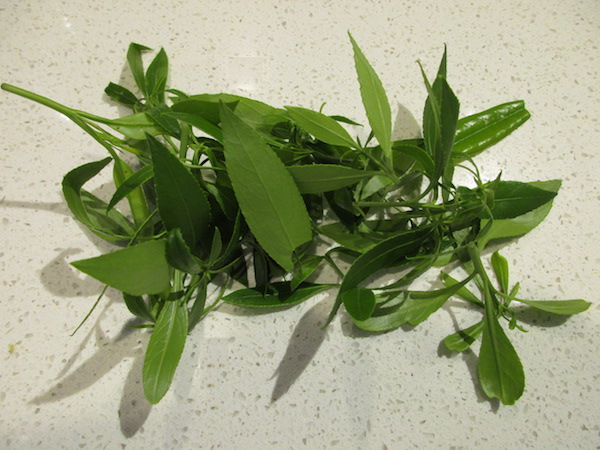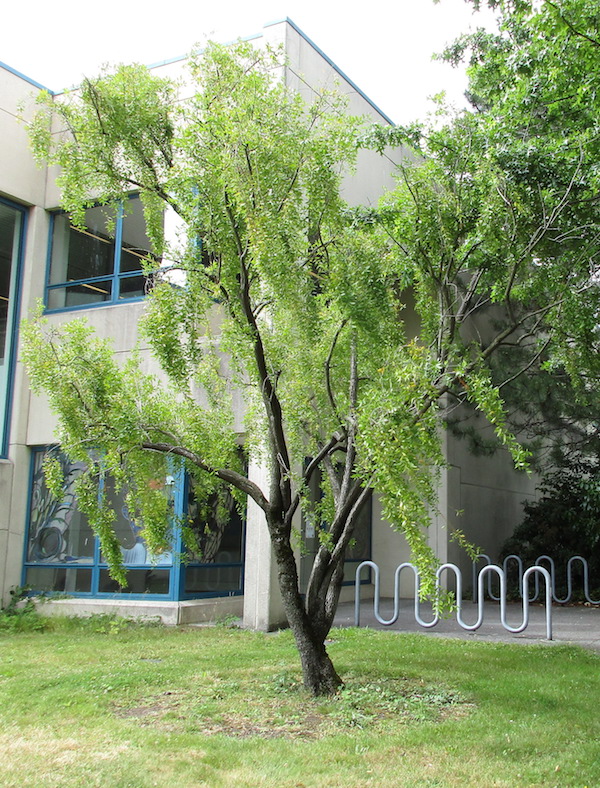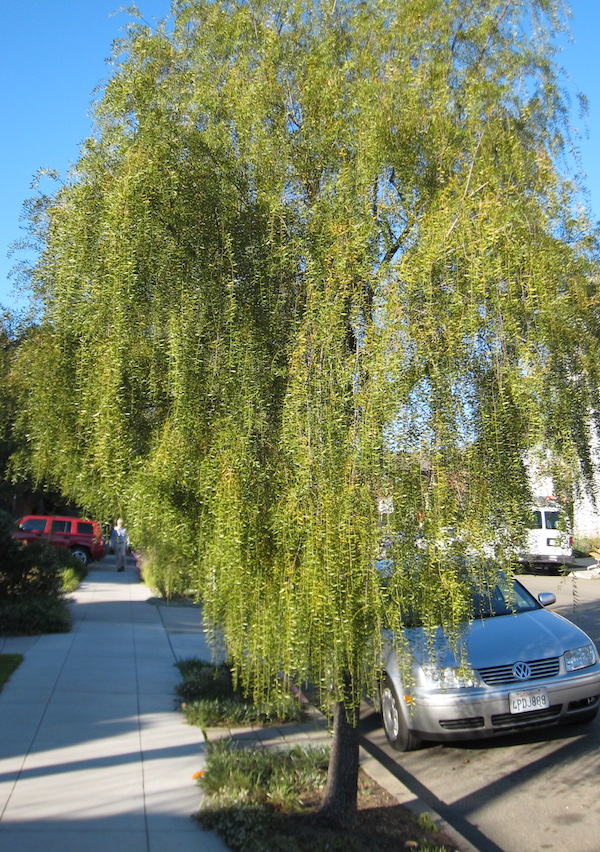Plant of the Month: August 2020
|
| Mayten Tree |
| Maytenus Boaria Mol. |
| = M. chilensis DC. |
CELASTRACEÆ; Bittersweet Family
|
| One of the finest-textured broadleaf evergreen trees that we can grow in Seattle, the Mayten is a graceful, desirable ornamental even though its flowers are insignificant. A related genus is Euonymus. The tree is also called Chilean Mayten, Smilax Tree, or Maiten Tree. From Chile and Argentina, it was named in 1782, after Maitén, its native Chilean (Mapuche) name. The Araucarian name is Huripo. The specific epithet Boaria means of cattle, which are very fond of eating the leaves. Introduced to England in 1822 or 1829; to North America by 1878 if not earlier. Common only in parts of California; it tends to perform best in northern California (and is weedy in some locales there). Winter hardiness varies according to the source of seeds (or cuttings). Some forms recall an evergreen weeping willow, with elegant and sparkling foliage sprays. However, some specimens are much weepier than others. Some are airy-crowned, others densely leafy. Leaves vary from 1 to 2.5 inches long, and can be slender or wider. Flowers are greenish-yellow, tiny and inconspicuous in March and April. The young fruit turns a rusty green and splits in late November, showing a small seed of brilliant Dutch vermilion or a deeper blood red; the old seeds are shiny black, rice-like in size. The tree tolerates, but dislikes, very dry conditions. In Seattle, the tree is very rare, undeservedly so. Other than in the arboretum I know of specimens only six places. It is slow to moderate in its growth rate; often it suckers. The Arboretum has two forms: one with long, broad, pale leaves up to 2.5 inches an inch wide; the other with small, narrow and dark leaves. The latter, also present at the U.W. campus, is healthier and more attractive. In the wild, the tree can grow to 100 feet tall. The largest in Seattle is at the U.W. campus is west of the Ocean Sciences building. Specimens 60 feet tall are known in New Zealand, California, and the British Isles and Ireland. In its native land, people eat its tender young spring greenery, raw or cooked. The flavor is very mild. The seeds yield a cooking oil, somewhat bitter, which advantageously replaces the oil of flaxseed. |
Maytenus Boaria GreenshowersTM is a named strongly pendulous seedling that originated at the arboretum at Davis, CA. Introduced by 1978 (officially in 1982) by Saratoga Horticultural Foundation of California. One at the U.W. campus is south of the Marine Studies Building.
Back
|

Maytenus Boaria in Seattle; photo by ALJ
|

Maytenus Boaria tender young edible greens; photo by ALJ
|

Maytenus GreenshowersTM in Seattle; photo by ALJ
|

Maytenus GreenshowersTM in California; photo by ALJ
|
|
|

